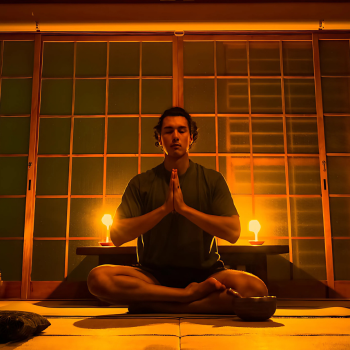From Burnout to Flow States
5 Actionable Recovery Protocols
- Recovery isn't about escaping work. It's about actively rebuilding your capacity. Here are five science-backed protocols to move from exhaustion to peak performance.
- Read Time: 15-20 min
- Intro
- The Myth of Passive Recovery
- Why High-Achievers Need Active Recovery
- Protocol 1: Master Your Breath to Master Your Nervous System
- Protocol 2: Use Cold & Heat Therapy to Build Resilience
- Protocol 3: Re-Engage Your Body with Strategic Movement
- Protocol 4: Find Your Sanctuary in Nature
- Protocol 5: Embrace True Disengagement with Mindfulness
- Reader Reflection: What Does Your Recovery Truly Look Like?

Author
Tenzin Tserang
Peak Performance Coach
Introduction
For one month, I implemented a non-negotiable, 20-minute active recovery protocol every single day. No exceptions. This wasn’t about taking time off; it was a deliberate experiment in managing my allostatic load—the cumulative wear and tear on the body from chronic stress. The impact on my HRV (Heart Rate Variability), a key marker for stress resilience, was staggering. My ability to transition from intense focus to deep relaxation improved dramatically, proving what I’ve seen with countless clients: escaping burnout and achieving a flow states isn’t about what you do at work; it’s about how you recover from it.
If you’re a high-performer stuck in a cycle of exhaustion, you probably think of “recovery” as chilling out on the couch with Netflix or doing something fun. You see it as a passive activity, a way to numb the stress. But this approach is fundamentally flawed. It doesn’t actually help your nervous system heal. True recovery is an active process.
You’re caught in a paradox: the more drained you feel, the less energy you have for the very activities that would replenish you. This article is for you. We will break down five actionable, science-backed recovery protocols that do more than just help you relax—they actively rebuild your physical and mental capacity. This is how you build a bridge from the draining reality of burnout to the energized focus of flow.
The Myth of Passive Recovery
The “executive athlete” is a concept I use with clients. Like a professional athlete, your performance depends on a balance between intense exertion and dedicated recovery. An athlete wouldn’t recover from a championship game by eating junk food and binge-watching TV for a week. They engage in active recovery: stretching, light movement, massage, and specific nutrition to help their body repair and come back stronger.
Why should a “executive athlete” in a high-stakes environment, be any different?
Passive recovery (like scrolling social media) often adds to your cognitive load and can even act as a dopamine-fueled distraction that makes returning to focused work even harder. Active recovery, on the other hand, is designed to stimulate your parasympathetic nervous system—your body’s “rest-and-digest” mode—which is essential for healing the damage caused by chronic stress
As we explored in The Neuroscience of Burnout, prolonged, unmanaged stress has measurable, negative effects on your brain. Active recovery is the antidote. It is the process by which you consciously signal to your brain and body that the “threat” has passed, allowing it to repair. By repeating this cycle of stress and recovery, we can fundamentally increase our tolerance for stress.
While these two approaches offer different paths to blood sugar control, the underlying principle remains the same. Finding the right strategy for you requires considering your individual needs and preferences.
- Hormesis
- This powerful biological process is known as hormesis—the principle that controlled doses of a stressor stimulate a positive adaptation that improves the body's resilience. It is the science behind the saying, "what doesn't kill you makes you stronger."
- Crucially, the "stressor" isn't just a formal protocol like a cold shower. Even a state of deep focus or flow is a metabolically expensive stressor that depletes the body's resources and takes a toll on the nervous system. Without active recovery, we cannot effectively bounce back and evolve.
- For example, an hour of intense flow might leave you feeling drained. By engaging in active recovery, you enable your body to refuel and your nervous system to reset, preparing you to enter flow again. When you repeat this process consistently, you are training your capacity for deep work, just like training a muscle, potentially enabling you to sustain flow for longer periods in the future.
- This adaptation known as super-compensation - is the real benefit of active recovery. It's how you systematically increase your ability to both perform at your peak and to grow from the challenges you face, building true, anti-fragile resilience.
- The 4 Stages of Flow
- Flow is not a single event; it is a four-stage cycle: Struggle, Release, Flow, and Recovery. Recovery isn't what you do after the process; it is the critical fourth stage where your brain replenishes the expensive neurochemicals spent during flow and consolidates learning.
Protocol 1: Master Your Breath to Master Your Nervous System
Your breath is a remote control for your nervous system. It’s the most direct tool you have to shift from the sympathetic “fight-or-flight” state to the parasympathetic “rest-and-digest” state.
- The Science:
- Slow, rhythmic breathing, particularly with an extended exhale, stimulates the vagus nerve. This is the main highway of your parasympathetic nervous system, and activating it sends a powerful calming signal throughout your body, lowering your heart rate and reducing stress hormones.
- The Technique: The Flow State Breath
- Inhale through your nose for a count of 3 seconds.
- Hold your breath for 2 seconds.
- Slowly exhale through your mouth for 10 seconds.
- Repeat this for three minutes. The extended exhale is the key to activating your rest-and-digest system.
- When to Use It: Practice this daily to build your baseline resilience. Use it before a stressful meeting, after a demanding work session, or whenever you feel your anxiety rising.
Protocol 2: Use Cold & Heat Therapy to Build Resilience
Strategically using temperature is a powerful biohacking tool for training your body’s stress response systems. These practices act as an “on-off switch” for your nervous system, providing a powerful parasympathetic rebound that counteracts chronic stress.
- The Science:
- Brief exposure to cold (like a cold shower or ice bath) and heat (like a sauna) are forms of "hormesis"—a low-dose stressor that stimulates a positive adaptive response in the body. It can reduce inflammation, improve circulation, and build mental toughness.
- The Technique:
- Cold Therapy: Start small. End your daily shower with 30-60 seconds of cold water. Focus on your breathing to stay calm. This trains your nervous system to remain composed under acute stress.
- Heat Therapy: If you have access to a sauna, 15-20 minute sessions can help relax muscles and promote a sense of well-being. An evening bath can also help lower core body temperature later, promoting better sleep.
- When to Use It: Use cold exposure in the morning to trigger a healthy cortisol and dopamine surge for focus and energy. Use heat therapy in the evening to wind down and aid in physical recovery.
Protocol 3: Re-Engage Your Body with Strategic Movement
When you’re mentally exhausted, the last thing you often want to do is exercise. But the right kind of movement is a powerful recovery tool.
- The Science:
- Low-intensity movement increases blood flow while flushing out metabolic waste. Critically, it can also induce Exercise-Induced Transient Hypofrontality (EITH), a state that quiets the prefrontal cortex and directly primes you for entering a flow state.
- The Technique: Zone 2 Cardio
- This is low-intensity, sustained exercise where you can still hold a conversation. Think of a brisk walk, a light jog, or cycling at a steady pace.
- Aim for 30-45 minutes. The goal isn't to push your limits but to engage your body in a restorative way.
- When to Use It: A walk after a meal can help stabilize blood sugar and improve focus. Scheduling Zone 2 cardio 2-3 times a week is a foundational part of Building Your "Burnout Body Armor".
- Bonus: Combine your Zone 2 Cardio with breathwork
Protocol 4: Find Your Sanctuary in Nature
Spending time in a natural environment has been shown to have profound effects on stress reduction and mental well-being.
- The Science:
- Exposure to nature can lower cortisol levels, reduce blood pressure, and improve focus. A natural environment is rich with novelty and complexity, which are external flow triggers that gently pull your attention into the present moment without being overstimulating.
- The Technique: This is simple. Go outside.
- Take a 20-minute walk in a park without your phone.
- Sit in a natural setting and simply observe your surroundings.
- If possible, try "grounding" by walking barefoot on grass or sand.
- When to Use It: Use this as a midday break to reset your mind. Make it a non-negotiable part of your weekend routine to decompress from the work week.
Protocol 5: Embrace "Boring Breaks" to Rewire Your Brain
Mindfulness is the ultimate form of active recovery for a brain fatigued by constant planning and multitasking. It’s how you resensitize your dopamine system.
- The Science:
- The goal is to starve your brain of stimulation so that it craves getting back to work for its reward. These "boring breaks" drop the bar for what your brain finds appealing, making dense work seem as compelling as scrolling social media. This practice also allows your brain's Default Mode Network to engage in upgraded rumination, creatively solving problems in the background.
- The Technique: Do One Thing at a Time
- Instead of always reaching for your phone in "in-between" moments, just be present. Stare at a wall, walk, or stretch.
- Practice single-tasking. When you drink your coffee, just drink your coffee. This trains the ability to rapidly shift attention, which is crucial for entering flow.
- When to Use It: All the time. This is a practice, not just a task. Use these boring breaks between deep work sessions to reset your dopamine sensitivity and recover your focus.
Reader Reflection: What Does Your Recovery Truly Look Like?
Be honest with yourself. This isn’t about judgment; it’s about creating a new strategy.
- When you feel drained, what is your default "recovery" activity? Is it active or passive?
- Which of the five protocols above feels most accessible for you to try this week?
- What is the biggest obstacle preventing you from incorporating true, active recovery into your schedule?
Reader Reflection: What Does Your Recovery Truly Look Like?
The single most important thing to grasp is that active recovery is not a luxury; it is a core component of peak performance. For the executive athlete, recovery is a weapon. It’s how you build capacity, sharpen your focus, and protect yourself from the corrosive effects of chronic stress. You cannot achieve a sustainable flow state without a disciplined recovery practice.
Stop seeing recovery as time lost. Start seeing it as an investment in your most valuable asset: your own energy and attention. Choose one protocol. Start with just 10 minutes a day. The path from burnout begins the moment you decide to recover as hard as you work.
P.S. If you feel like you don’t have time for recovery, that’s the clearest sign that you need it most. The goal isn’t to add more to your plate, but to make the time you do have work for you on a deeper, biological level.
Ready to take control of your energy and unlock flow state on demand?
Follow me on my socials, explore my blog, or book a free call to create your strategy to Flow State on demand.


